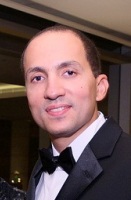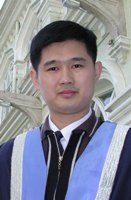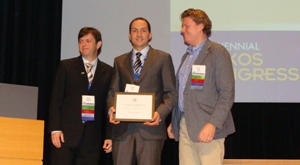SICOT e-Newsletter
Issue No. 8 - May 2009
Editorial
ISAKOS Meeting in Osaka, Japan Dr Hatem Said, Young Surgeons Committee Chairman
Dr Hatem Said, Young Surgeons Committee Chairman
The ISAKOS (International Society of Arthroscopy, Knee Surgery and Orthopaedic Sports Medicine) meeting is one of the largest for arthroscopists and knee surgeons. This year it was held in Osaka, Japan. The timing was chosen correctly as the weather was excellent and it was the Cherry Blossom Season, which only occurs for 1 to 2 weeks a year. Osaka was an ideal location for the meeting and it is close to Nara and Kyoto, which are famous tourist places. It was a wonderful opportunity to get introduced to Japanese culture, with its great precision, meticulousness and courtesy.
In the scientific sessions, one of the most hotly debated topics was Single or Double Bundle ACL reconstructions. The jury is still out on this dilemma with supporters on both sides. One of the strongest advocates for double bundle reconstruction is Professor Freddie Fu, from Pittsburgh in the United States. The controversy further extends to the femoral insertion of the ACL. As Prof Fu explains, whether using single or double bundle, we are placing the insertion incorrectly at 10 oâclock for the right knee. The correct position should be at 9 oâclock (posterior to the residents ridge, at 90° flexion), and that, of course, means drilling the femoral tunnel through the medial portal rather than trans-tibial.
Several sessions and workshops were held on Hip Arthroscopy, which is becoming a rapidly growing field. Key surgeons such as Dr Marc Philippon, Dr Marc Safran, and Dr Michael Dienst were present and gave very interesting talks.
The ISAKOS meeting was also a good opportunity for me as I had been chosen for the Upper Limb Travelling Fellowship Award for 2010.    Â
    Â
 Dr Peter Yau, Young Surgeons Committee, Hong Kong
Dr Peter Yau, Young Surgeons Committee, Hong Kong
One of the most interesting topics for me was the series of instructional course lectures on the management of multidirectional shoulder instability in athletes. MDI is not a difficult problem in diagnosis, but a headache-like problem in providing proper management. I was glad to hear that all speakers agreed that surgical intervention should not be over-emphasized, though the surgical result after proper patient selection is usually good.
I found the talk on the biomechanics of multidirectional instability of the shoulder delivered by Professor Eiji Itoi most helpful. Understanding the biomechanics of the shoulder joint helps us to differentiate midrange laxity from instability. It leads to a better understanding of the key issue in the pathophysiology of multidirectional instability. This bears an important impact on the diagnosis of the condition and the selection of proper treatment for this difficult problem.
     Â
